Refined domain map:

Precedents:
-
Nakajima, Kyoko. “Multi-Sensorial Gastronomy by Philips Design.” Axis, no. 145, 2010, pp. 45, Arts Premium Collection
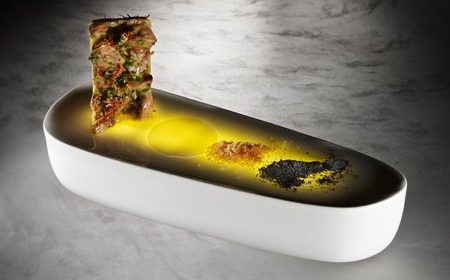
https://static.dezeen.com/uploads/2010/02/dzn_Philips-Design-and-Spanish-restaurant-Arzak-5.jpg
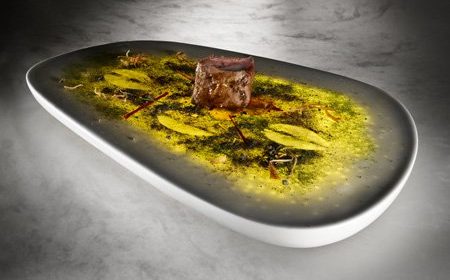
https://static.dezeen.com/uploads/2010/02/dzn_Philips-Design-and-Spanish-restaurant-Arzak-6.jpg
Description:
Philips Design creates a series of project related to the food experience in the future and this is one of them. Philips Design works with Spanish restaurant Arzak to create 3 conceptual tablewares which combine technology. As the food was placed on the surface, the tableware will emit fragrances, vibrations, and light to response. I like the concept of exploring different stimuli that enhance the experience of eating, which is related to my idea of sensory experience.
Domains:
Culinary Arts, Sensorial Design
-
Gander, Kashmira. The Smell Memory Kit that can Transport You Back to Life-Changing Moments. Independent Digital News & Media, London, 2016
http://smellmemorykit.supersense.com/
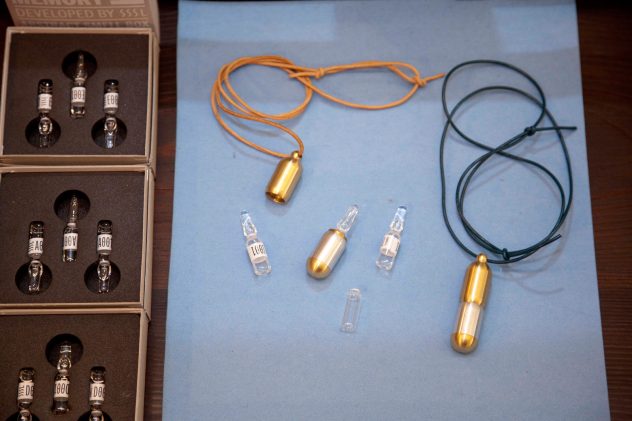
http://smellmemorykit.supersense.com/img/slider1/1.025c.jpg
Description:
Artist Sissel Tolaas creates The Smell Memory Kit which allows the user to collect a customized aroma and bring back the specific moment in life. It’s intriguing that certain smell can relate people with some particular images and personal memory. This is a good product example of using human synaesthetic.
Domains:
Synesthesia
-
Eagleman, David. “Can we create new senses for humans?” TED, March 2015, https://www.ted.com/talks/david_eagleman_can_we_create_new_senses_for_humans.
Description:
Claiming that human experience of reality is limited by biology, David Eagleman researched the brain processes and developed new interfaces which can take the unseen information and re-interpret to human. I appreciate the idea of thinking beyond human constraints and discovering a new sensorial system for people to reconsider the world around us.
-
V.E.S.T (versatile extra-sensory transducer), David Eagleman, Scott Novich, 2015
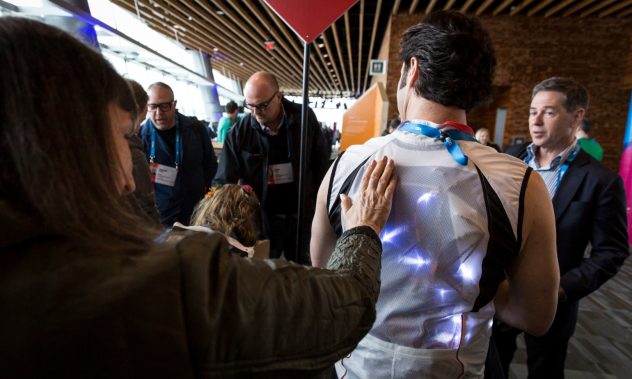
Attendees get a hands-on look at David Eagleman’s vest at TED2015 – Truth and Dare, Session 2, March 16-20, 2015, Vancouver Convention Center, Vancouver, Canada. Photo: James Duncan Davidson/TED
-
Harbisson, Neil. “I listen to color.” TED, June 2012, https://www.ted.com/talks/neil_harbisson_i_listen_to_color#t-556062.
Description:
Neil Harbisson, a colorblind artist, uses a device attached to his forehead to transfer color into audible frequencies. Unlike other people seeing the world with color, he is able to hear the sounds of color and interpret things from a unique aspect. I was very impressed with how he played with sound and visual in particular. It makes me rethink some bias or preconceived ideas created by our senses.
-
THE CHROMAPHONE AT MADRID FUSIÓN. Harbisson, Neil. Roca, Jordi. January 27, 2016

Description:
Neil Harbisson collaborates with a Spanish restaurant. They interpreted different ingredients’ colors into tones and created a symphony of dessert. I really like the transformation of food to music. Moreover, they using color recognition technology and develop a digital container for dessert which can play a song of the plates.
Domains:
Culinary Arts, Sensorial Design
-
McLean, Kate. Sensory Maps, 2014, http://sensorymaps.com. Accessed 6 Sep. 2017.
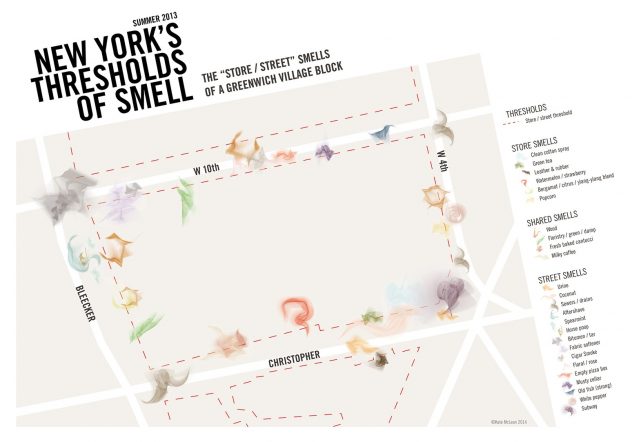
https://media.newyorker.com/photos/59097fb12179605b11ad9746/master/w_1548,c_limit/Bosker-TheSmellyPleasuresofExploringCitiesNose-First_02.jpg
Description:
Kate McLean used smell as a medium to map the unique olfactory landscapes, or “smellscapes,” of locales. People tend to capture the visual parts of a place instead of odor. However, the smell is more sensitive comparing to visual memory. I think this is a good precedent of using regularly ignored sense to explore the environment.
Domains:
Synesthesia, Sensorial Design
-
“Heinz Beanz Flavour Experience.” Bompas & Parr, February. 2013, http://bompasandparr.com/projects/view/heinz-beanz-flavour-experience/.

Description:
Bompas & Parr studio created a series of tableware that responded to four different flavors of Heinz Bean. They developed an electric spoon which played unique music when it dipped into the bowl. The texture and shape of the bowl are designed holistically based on the flavors. I think the holistic experience of this project is extremely impressive and created a strong connection to the product itself.
Domains:
Synesthesia, Sensorial Design, Culinary Art
- Rinck, Fanny, Catherine Rouby, and Moustafa Bensafi. “Which Format for Odor Images?” Chemical senses 34.1 (2009): 11-3. ProQuest. 7 Sep. 2017 .
Description:
This paper discussed the mechanisms behind visual mental images and odor mental images, also the connection between memory and olfactory. I am curious about the experience of “smelling with the mind’s nose” and this paper helps me get more knowledge about the biological mechanism behind it.
- Rhodes, Amy. Synaesthetic Design Expression: The Blending of the Senses and its Implications on Brand Expression, Arizona State University, Ann Arbor, 2015
Description:
Amy Rhodes investigates the synaesthetic responses consumers have to the brand. From the texture of packaging to the product, the holistic design process covers all type of sensory stimulators that can influence perception and brand trust. I am interested in how to conduct holistic design process and apply all senses in the development of branding.
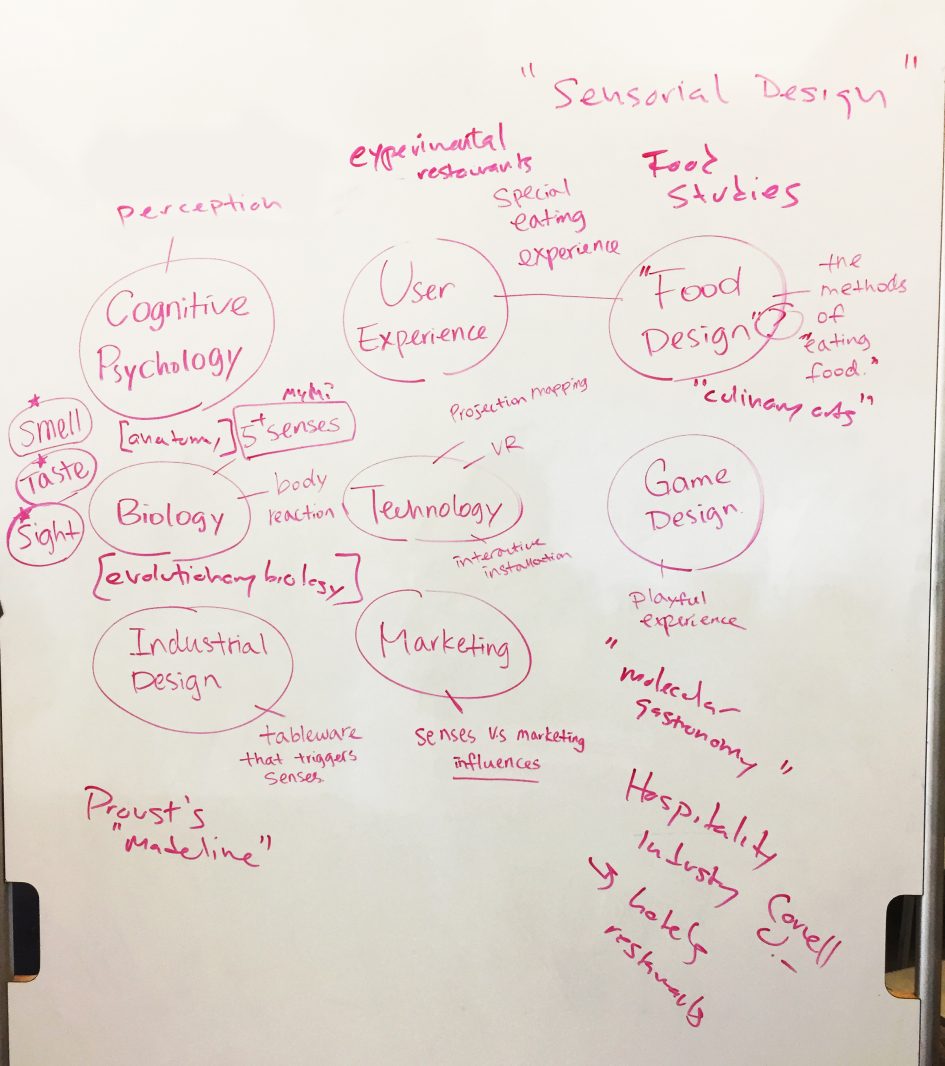
Leave a Reply